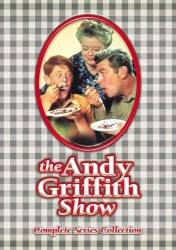The Merchant of Mayberry - S2-E22
Plot hole: In the episode where Barney confronts the two farmers for selling produce on the side of the road, Barney mentions that they're not allowed to sell because of "section 17.4" of the ordinance code - that street vending is not allowed, and Andy confirms it. But in this episode Bert comes to town and is selling dry goods, etc. and he's allowed to sell. Even Ben states that there must be a structure if he's selling - wouldn't you think that Andy and Barney would have known that already before setting him up to sell?
Andy and Barney in the Big City - S2-E25
Factual error: Though they are suppose to be in Raleigh, the skyline view is not Raleigh, NC.
Factual error: Andy tells the hobo "that will be the 3:45 stopping for water", meaning its a steam locomotive, but by the time this episode was made railroads had long since switched to diesel.
Continuity mistake: At the beginning of the show, Andy notices a wanted poster on the office bulletin board and tells Barney that he had learned from news accounts that the wanted person had been captured. Barney removes the poster and places it in a file cabinet. The next day when Roger reports for duty, he and Barney are looking at the bulletin board and the wanted poster is back up.
My Fair Ernest T. Bass - S4-E17
Character mistake: During the party at Mrs. Wiley's, Ernest Bass' girlfriend is called "Ramona." At the end of the show, Ernest T keeps calling her "Romina".
Goober Takes a Car Apart - S5-E17
Factual error: How in the world did Goober lift that heavy motor out of the car?
Factual error: A town like Mayberry with a mayor and council would have its own police force, not just a sheriff.






Answer: As noted in the previous answers, in real life, things like this provided wind and/or rain deflection, and also maintained a bit of privacy when blinds were raised somewhat. The interior courthouse set was located in the studio, so the "outside" Main Street didn't exist. I believe these things were added to the courthouse windows for practicality, to avoid some crew movement being visible on the opposite side of those windows. These are not "window boxes" to hold anything, as they're actually bottomless; we can see the Venetian blind's long pull cords under them. They're made of plywood and simple to build, so the "material and labor" was inexpensive. Similar variations made of different materials are in other movies/shows. In 1957's "12 Angry Men," textured chicken wire glass panels are in the jury room windows, and in "Jesse Stone: Night Passage" another type is in Jesse's office windows.
Super Grover ★